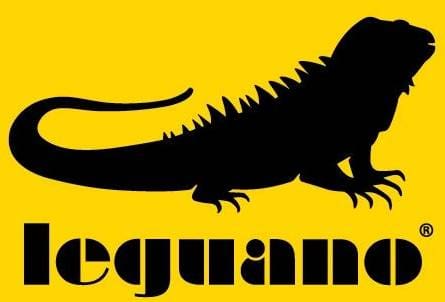Frequently Asked Questions
Possible uses
A: Yes, you can. After using them in chlorine or salt water, make sure to rinse the barefoot shoes with clean water to prevent fading of the upper material and rusting of the eyelets.
A: In general, yes. However, barefoot shoes may not be suitable for cycling with pedals that have anti-slip nails, as they can potentially damage the soles of the shoes. They are, however, suitable for everyday use on touring bikes or city bikes.
A: Absolutely! The soles are well-suited for tennis. They prevent grains from getting stuck in the grooves on the sand, provide excellent grip, and allow for faster, more endurance-driven movement using foot muscles, all without the risk of injury.
A: It's not recommended, as it could lead to a shorter lifespan for the leguanitos. While the soles are durable, if a child drives their mobile base over asphalt with their feet dangling, it may wear down the upper material and potentially lead to holes.
A: Yes, absolutely. Movement generates heat, and in barefoot shoes, your feet have the freedom to move, activating muscles and ensuring better blood circulation to your feet and toes. Many of our winter models also come lined for added warmth.
A: Virtually anywhere! Whether in your leisure time, at work, during sports, in the water, or at the beach, our barefoot shoes are suitable for any surface and provide optimal protection for your feet. Sharp objects or rough surfaces pose no problem.
A: Fear not the elements! While the shoes may get wet in the rain, the constant movement generates heat, causing them to dry out quickly after a shower. Protected barefoot walking is also possible in snow and ice, thanks to the traction provided by the pronounced sole. However, exercise caution on icy and slippery surfaces!
A: Sturdy shoes aren't necessary for hiking; in fact, naturally developed and strong feet provide enduring support without pain or injury. However, like any new activity, barefoot hiking requires practice. Start with short distances and gradually increase.
Health
Many of these discomforts stem from misaligned feet. Embracing barefoot walking not only trains foot muscles but also enables pain-free movement. Often, pain becomes a thing of the past in a short period. However, if symptoms persist, consulting a doctor is recommended!
Numerous customers with Hallux Valgus have found relief with the thin upper material of our shoes.
Orthopedists frequently recommend gentle barefoot walking in these cases to fortify foot muscles. Barefoot shoes offer optimal protection against injuries.
Certainly not. Walking barefoot is one of the most natural activities. However, due to the prolonged use of shoes with relatively inflexible soles, our feet often become unaccustomed to them. Most shoes significantly alter our walking pattern. The heel and cushioning force the foot onto the heel rather than distributing pressure evenly across the forefoot and midfoot. This can lead to excessive impact on the foot, knee, hip, and back, potentially causing muscle atrophy and poor posture.
Engaging in barefoot or minimal shoe running provides a range of advantages:
Freedom of movement for the feet
Reactivation and strengthening of foot muscles
Fosters healthy foot development
Enhances blood circulation and activates the venous pump
Heightens sensory feedback
The increased ground sensitivity also enhances balance and sure-footedness, allowing the body to adapt seamlessly to varying terrain. This preserves the natural gait, enabling joints to move freely and execute their functions unimpeded.
General Questions About Barefoot Shoes
Begin with short walks, about 10 minutes several times a week, to gradually rebuild foot muscles. The transition from conventional shoes to barefoot should be approached with caution. If you experience muscle soreness, take a few days' break before continuing.
Walking barefoot is natural and beneficial for your health. Shoes often immobilize foot muscles, whereas walking barefoot reactivates and strengthens them. Barefoot shoes allow your feet to move freely, adapting to your natural movements.
Consult our size finder for guidance.
While leguano shoes aren't waterproof, it's intentional. Feet in waterproof shoes can become sweaty and lack ventilation. Leguano aims to maintain a natural feet climate with breathability.
Barefoot walking strengthens foot muscles and ligaments over time, reducing the likelihood of stumbling or twisting an ankle. Barefoot shoes primarily protect against environmental elements, such as stones and debris.
No, the fit remains intact even after numerous machine washes.
Natural running style doesn't require cushioning, which is more relevant for runners not following this style. Traditional running shoes may necessitate cushioning to absorb impact.
While possible, it negates the benefits of going barefoot. The purpose is to strengthen foot muscles and restore foot shape. Insoles stabilize the foot's current condition, providing relief rather than challenge. If needed for medical reasons, consult a doctor.
Minimal shoes like leguanos challenge foot muscles, leading to increased movement and heat generation. Sweating may occur, but it typically reduces after an adjustment period.
Certainly. leguano socks are a popular choice among our customers. The term "barefoot shoe" refers to the natural feel provided by leguanos, thanks to their thin, flexible sole and spacious, foot-shaped fit.
